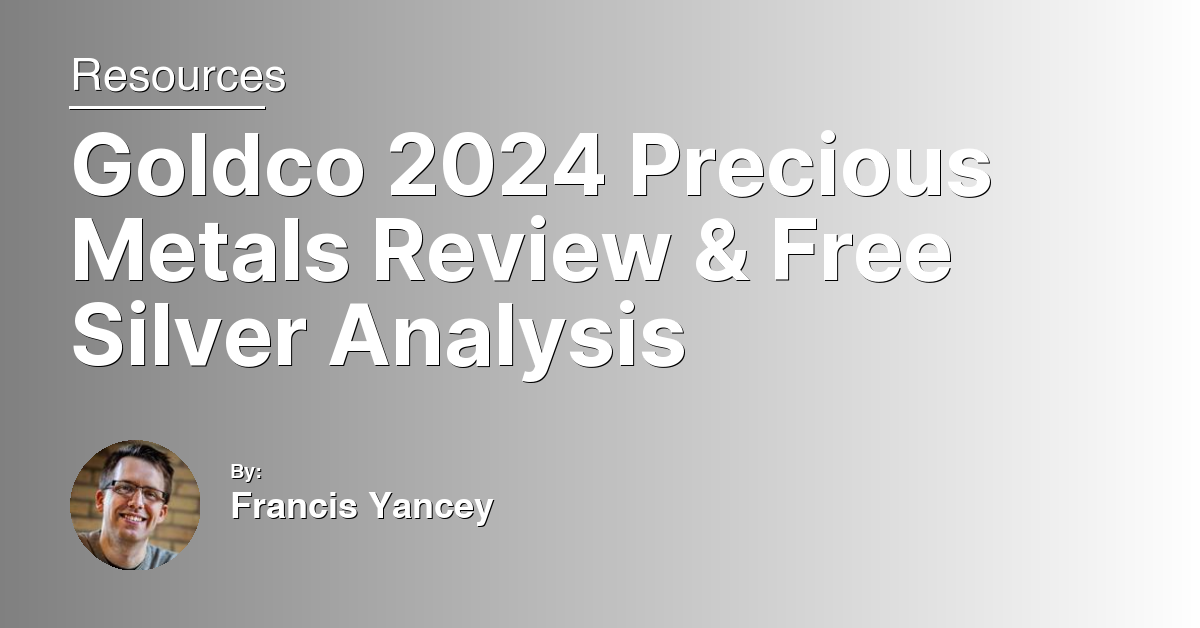In an ever-evolving financial landscape, savvy investors constantly seek diverse and resilient assets to fortify their portfolios. Among the myriad of options, precious metals IRA investing, with a spotlight on palladium, emerges as a compelling avenue. This article delves into the intricacies of investing in palladium through an IRA, covering the benefits, risks, and a curated list of approved palladium products. Whether you’re a seasoned investor or new to the world of precious metals, our comprehensive guide equips you with the essential knowledge to navigate the promising yet intricate realm of palladium investing.
IRS Requirements for Precious Metals
To include palladium in a Precious Metals IRA, the IRS mandates specific requirements regarding purity, form, and custodianship. Palladium products must have a fineness of at least .9995, adhering to standards set by organizations like the London Bullion Market Association or the New York Mercantile Exchange. Approved forms include bullion bars, coins, and certain rounds that meet these purity criteria.
Not all palladium assets are eligible; the IRS approves specific coins like the Canadian Palladium Maple Leaf and bars produced by manufacturers accredited by exchanges recognized by the IRS, such as the London Metal Exchange or those that meet ISO 9000 standards. These investments are held in a self-directed IRA, requiring a custodian, often a bank or trust company, to manage the physical palladium.
Investors are advised to consult with a financial adviser to navigate tax benefits, such as tax deferral on potential gains, ensuring compliance with IRS rules for retirement savings diversification and protection against inflation.
Approved Palladium Products for IRAs
| Product Name | Purity | IRA Approved |
|---|---|---|
| American Palladium Eagle | .9995 | Yes |
| Canadian Palladium Maple Leaf | .9995 | Yes |
| PAMP Suisse Palladium Bars | .9995 | Yes |
| Baird & Co. Palladium Bars | .9995 | Yes |
| Perth Mint Palladium Bars | .9995 | Yes |
Disallowed Palladium Bullion in IRAs
When investing in a Precious Metals IRA, specifically targeting palladium, it’s crucial to understand that not all palladium bullion products are eligible for inclusion. The Internal Revenue Service (IRS) mandates that palladium bullion must meet certain fineness requirements: at least 0.9995 pure. Consequently, palladium bars or coins that do not meet this criterion, regardless of their market value or collectibility, cannot be part of a self-directed IRA.
Moreover, palladium products need to be produced by a manufacturer accredited by the London Bullion Market Association (LBMA), ISO 9000, or a national mint to ensure the metal’s purity and authenticity. For example, while the Canadian Maple Leaf palladium coins are eligible, certain collectible or rare palladium coins and bars that lack the necessary accreditation or fineness are disallowed.
Investors should consult with a financial adviser to ensure their IRA investments in palladium are compliant with IRS rules, avoiding potential tax penalties. This adherence not only safeguards the investor’s portfolio but also optimizes the tax deferral benefits inherent in Individual Retirement Accounts.
Advantages of Palladium IRA Investments
Palladium IRA investments offer a unique opportunity for diversification beyond the traditional stock market and equity investments. As a precious metal, palladium serves as a hedge against inflation and currency devaluation, similar to other precious metals like gold, silver, and platinum, but with the added benefit of being rarer. This scarcity can lead to higher demand and potentially greater returns on investment.
Unlike paper assets or banknotes, physical palladium in an IRA, whether in the form of bullion coins or bars, is tangible and holds intrinsic value. Approved products for investment include the Canadian Maple Leaf coins, which are recognized worldwide for their purity, backed by the Canadian government, and meet the stringent metallurgical assay standards required for IRA eligibility.
Investing in a Palladium IRA also offers tax advantages, such as potential tax deferral or tax-free gains, under the United States tax code. This, along with the secure storage options available through IRS-approved depositories like the Delaware Depository, ensures your investment is safe and compliant.
Lastly, palladium’s growing industrial demand, especially in the automotive industry for catalytic converters, suggests a strong market outlook. This makes Palladium IRA an attractive option for investors looking to diversify their retirement portfolios and protect against market volatility.
Depository Fees for Palladium IRAs
When investing in a Palladium IRA, understanding depository fees is crucial. These fees are charged for the secure storage and insurance of your palladium assets, ensuring their safety and compliance with IRS regulations for precious metals IRAs.
Typically, depository fees vary based on the value of the palladium stored, ranging from a fixed rate to a percentage of the account value. The Delaware Depository, a popular choice among investors, offers competitive pricing structures for palladium storage, including segregated and non-segregated options to cater to individual investor preferences.
It’s important to note that while some IRAs include the cost of storage in their annual fees, others may charge separately for this service. Investors should also consider the potential for additional costs, such as transportation or insurance fees, which can vary depending on the facility and the amount of palladium stored.
Choosing the right depository is vital, as it directly impacts the security and cost-effectiveness of your palladium IRA investment. Investors are encouraged to research and compare fees and services offered by IRS-approved facilities, such as the Delaware Depository, to make an informed decision.
Options for Palladium IRA Custodians
When choosing a palladium IRA custodian, investors should prioritize firms with a strong track record in handling precious metals, especially those like palladium, gold, silver, and platinum. These custodians are equipped to manage the intricate details of buying, storing, and selling palladium within your IRA, ensuring compliance with IRS regulations.
Key options include custodians that offer a wide range of IRS-approved palladium products, such as the Canadian Maple Leaf coins, American Buffalo coins, and other bullion coins recognized for their purity and authenticity by major exchanges like the New York Mercantile Exchange and London Metal Exchange. These products must meet specific fineness standards, as verified through a metallurgical assay.
Investors should also consider custodians that facilitate easy liquidation of palladium assets and provide tax-exempt or tax-deductible advantages, enhancing the investment’s value as a hedge against inflation and currency devaluation. It’s crucial to select a custodian with comprehensive knowledge in both numismatics and the broader precious metals market, ensuring your investment is both secure and potentially lucrative.
Choosing a Precious Metals Depository
When choosing a precious metals depository for your Palladium IRA, it’s crucial to consider security, insurance, and reputation. Opt for depositories that are IRS-approved to ensure compliance with regulations for your Individual Retirement Account. These facilities offer the necessary safeguards to protect your investment in palladium coins and bullion, such as the Canadian Palladium Maple Leaf or the American Buffalo.
Look for depositories with transparent storage fees and accessible customer service to address any concerns about your precious metal holdings. It’s also wise to select a depository with a proven track record in handling IRA-approved precious metals and offering segregated storage options to keep your assets separate from others.
Finally, consider the depository’s location. Facilities within the United States, for example, might offer more convenience and potentially lower shipping costs for American investors. This choice plays a critical role in the long-term security and accessibility of your palladium investment.
Understanding Precious Metals IRAs
It’s crucial to know that not all precious metals products are eligible for inclusion. The Internal Revenue Service (IRS) specifies acceptable purity levels: for gold, it must be 99.5% pure; silver, 99.9%; platinum and palladium, 99.95%. This includes well-known coins such as the American Buffalo, Canadian Gold Maple Leaf, and the Palladium Maple Leaf.
Certain proofs and collectible coins, despite their appeal to numismatics, may not qualify due to these standards. Additionally, all products must be held by an IRS-approved custodian or trustee, ensuring that your investment is secure and compliant. When selecting palladium products for your IRA, ensure they meet these criteria to benefit from the potential tax advantages and to safeguard your retirement savings.
Opening a Precious Metals IRA Account
To open a Precious Metals IRA account, start by choosing a custodian or trustee that specializes in these types of investments. It’s essential to pick a company experienced in precious metals to ensure compliance with IRS rules. You’ll then fund your account, either through a transfer, rollover from another IRA, or by depositing cash.
Next, select the palladium products you wish to include. The IRS permits certain palladium coins and bars for IRAs, including the Canadian Palladium Maple Leaf and other coins issued by the United States Mint, such as the American Eagle bullion and proof coins. Remember, the IRS requires these investments to meet specific fineness standards.
Your custodian will then purchase these items on your behalf and arrange for their storage in an approved depository. This process ensures your investments are safe and secure, while also keeping them within IRS regulations for tax advantages. It’s a prudent way to diversify your portfolio, hedge against inflation, and potentially benefit from the rising prices of palladium and other precious metals.
Precious Metals IRA Costs and Fees
When considering a Palladium Precious Metals IRA, it’s crucial to understand the costs and fees associated with this form of investment. Initial setup fees can range from $50 to $150, depending on the custodian. Additionally, there’s an annual custodian fee, which typically ranges from $75 to $300, to maintain your IRA.
Transaction fees for buying or selling assets like the American Buffalo coin or Canadian Gold Maple Leaf may apply, usually a percentage of the transaction amount. Storage fees are another important factor, as physical palladium and other precious metals require secure storage. These fees depend on the storage provider but generally start at $100 annually.
It’s essential to consider these costs against the potential tax benefits, like tax deductions and the tax-efficient nature of an IRA, to evaluate the true value of a Palladium IRA.
Precious Metals IRA Rollover Process
Next, you’ll choose the specific palladium products to include in your IRA. Options often include palladium bullion coins like the American Eagle, Canadian Maple Leaf, or other products approved by the IRS, ensuring compliance and tax benefits. It’s vital to select products from recognized mints, such as the United States Mint or the Royal Canadian Mint, to guarantee purity and authenticity.
Finally, your custodian will purchase these assets on your behalf and oversee their secure storage in an IRS-approved depository. This step ensures your investments are safe and properly accounted for, maintaining their eligibility for IRA benefits. Regular audits and inventory checks keep your investment transparent and under your control, offering a solid hedge against inflation and stock market volatility.
Gold IRA Versus Palladium IRA Investments
When comparing a Gold IRA to a Palladium IRA, investors should consider several key factors including market stability, price, and potential for returns. Gold has long been seen as a store of value, offering stability amid economic fluctuations and acting as a hedge against inflation and deflation. Its price is influenced by global events, central bank policies, and demand in industries like jewelry and technology.
Palladium, while less traditional, has seen a surge in demand, particularly in the automotive industry for catalytic converters. Its price can be more volatile than gold, offering potentially higher returns but with increased risk. Palladium IRAs are newer and might hold coins like the Canadian Maple Leaf or the American Eagle, both approved for IRA investments.
Investors in Gold IRAs might include coins such as the American Buffalo or the Australian Kangaroo, known for their purity and acceptance in an IRA. Both gold and palladium investments offer tax benefits, acting as tax-deferred or tax-free (Roth) stores of wealth within an Individual Retirement Account structure.
Choosing between gold and palladium IRAs depends on one’s risk tolerance, investment goals, and the desire for diversification in precious metals.

